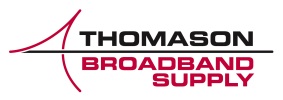
- OEM compatible Equalizers and Pads
- Optical Attenuators, Mini-Nodes and Accessories
- Repair & Testing Service
- Distribution and Headend Equipment
- We Buy Your Excess Equipment!
Search Products
The cart is empty.
Cart contains {{shoppingcart.totalQuantity}} Item(s) Total:
{{shoppingcart.subtotal}}
{{shoppingcart.total}}



 RF2F Mini-Optical L...
RF2F Mini-Optical L...


